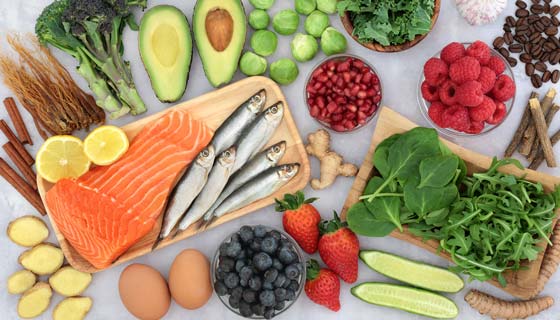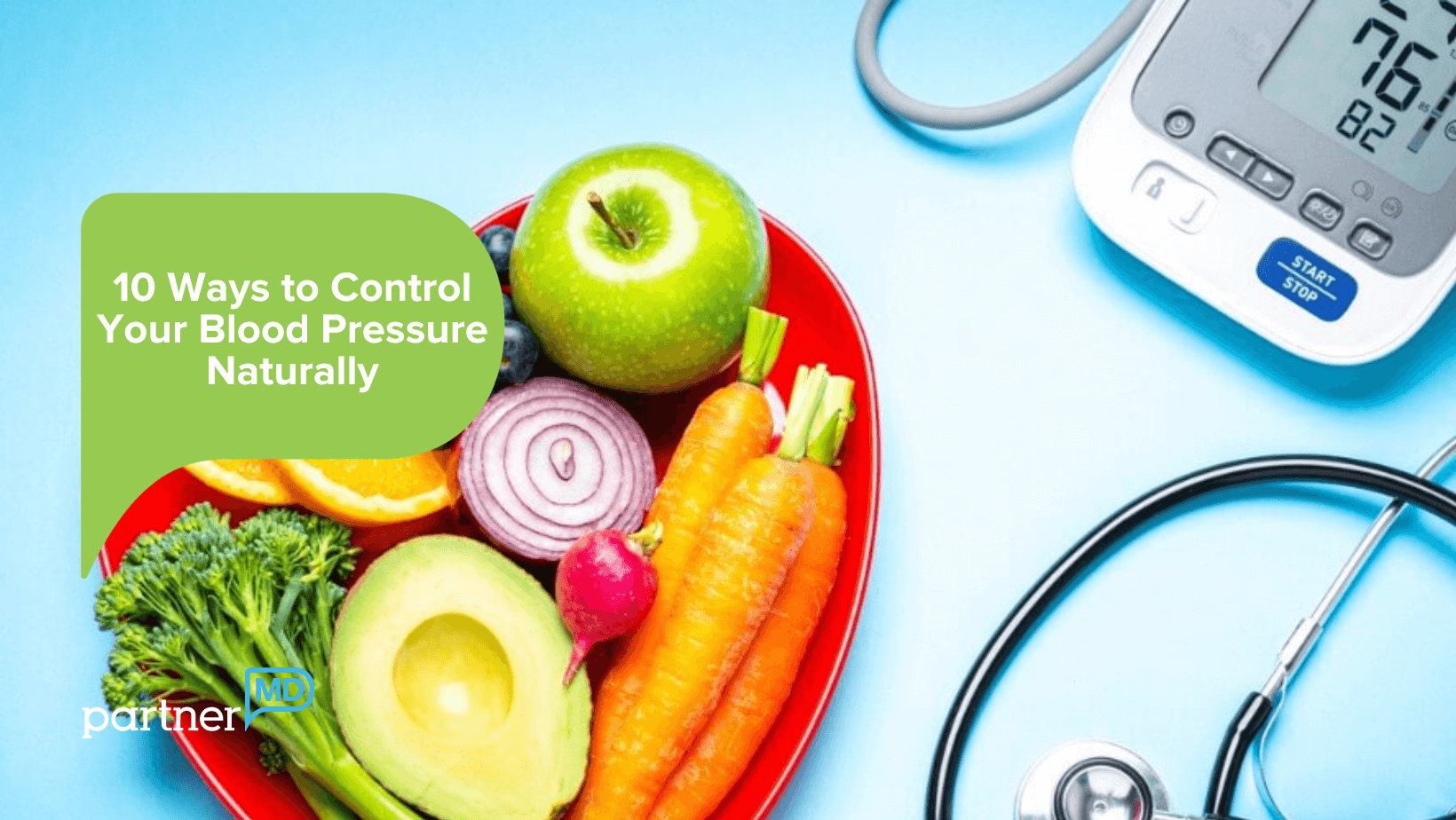
Inflammation is a natural response by the body’s immune system to protect against injury, infection, or disease. However, chronic inflammation can contribute to various health issues, including heart disease, diabetes, arthritis, and even cancer. Fortunately, incorporating anti-inflammatory foods into your diet can help reduce chronic inflammation and promote overall well-being. Here’s a comprehensive guide to the best anti-inflammatory foods you should consider adding to your daily meals.
1. Fatty Fish
Why It’s Beneficial:
Fatty fish, such as salmon, mackerel, sardines, and tuna, are rich in omega-3 fatty acids—namely EPA and DHA—that are known to reduce inflammation. Omega-3s help decrease the production of inflammatory substances like cytokines and prostaglandins.
How to Include It:
- Grill or bake salmon with herbs and lemon for a flavorful, anti-inflammatory meal.
- Add canned sardines to salads for a quick omega-3 boost.
- Make a tuna salad with olive oil and fresh vegetables.
2. Leafy Greens
Why It’s Beneficial:
Leafy greens like spinach, kale, and Swiss chard are loaded with antioxidants and polyphenols, which help combat oxidative stress and inflammation. They are also high in vitamins A, C, and K, which have anti-inflammatory properties.
How to Include It:
- Blend spinach or kale into smoothies for a nutritious start to your day.
- Create a mixed greens salad topped with nuts and berries.
- Sauté Swiss chard with garlic and olive oil as a side dish.
3. Berries
Why It’s Beneficial:
Berries—such as blueberries, strawberries, raspberries, and blackberries—are packed with antioxidants, particularly anthocyanins, which have powerful anti-inflammatory effects.
How to Include It:
- Add berries to oatmeal or yogurt for a delicious breakfast.
- Snack on a bowl of mixed berries for a mid-day energy boost.
- Blend them into smoothies or use as a topping for desserts.
4. Nuts and Seeds
Why It’s Beneficial:
Nuts like almonds, walnuts, and seeds such as chia and flaxseeds are high in healthy fats, fiber, and magnesium—all of which help lower inflammation. Walnuts, in particular, are rich in omega-3 fatty acids.
How to Include It:
- Sprinkle chia or flaxseeds on yogurt or oatmeal.
- Snack on a handful of almonds or walnuts.
- Make homemade granola with a mix of nuts and seeds.
5. Olive Oil
Why It’s Beneficial:
Extra virgin olive oil is rich in monounsaturated fats and oleocanthal, a compound known to have anti-inflammatory effects similar to ibuprofen.
How to Include It:
- Use olive oil as a base for salad dressings.
- Drizzle over vegetables before roasting.
- Sauté foods in olive oil instead of butter.
6. Turmeric
Why It’s Beneficial:
Turmeric contains curcumin, a powerful anti-inflammatory compound. Curcumin helps inhibit inflammatory pathways and reduce levels of inflammatory markers in the body.
How to Include It:
- Add turmeric powder to soups and stews.
- Make a turmeric latte with almond milk and honey.
- Sprinkle turmeric on roasted vegetables.
7. Ginger
Why It’s Beneficial:
Ginger has bioactive compounds like gingerol that reduce inflammation and oxidative stress. It also helps relieve pain related to inflammatory conditions like arthritis.
How to Include It:
- Brew ginger tea for a soothing drink.
- Add grated ginger to stir-fries or marinades.
- Blend fresh ginger into smoothies for an anti-inflammatory kick.
8. Tomatoes
Why It’s Beneficial:
Tomatoes are high in lycopene, an antioxidant that reduces inflammation, particularly in the lungs and the rest of the body. Cooking tomatoes increases their lycopene content.
How to Include It:
- Enjoy tomato-based sauces with whole-grain pasta.
- Add fresh tomatoes to salads and sandwiches.
- Make homemade salsa for a nutrient-packed dip.
9. Green Tea
Why It’s Beneficial:
Green tea contains epigallocatechin-3-gallate (EGCG), a powerful antioxidant that inhibits inflammation and protects cells from damage.
How to Include It:
- Drink a cup of green tea daily as a healthy beverage option.
- Use cooled green tea as a base for smoothies.
- Add matcha powder (a concentrated form of green tea) to recipes for an antioxidant boost.
10. Dark Chocolate and Cocoa
Why It’s Beneficial:
Dark chocolate is rich in flavonoids, antioxidants that reduce inflammation. Look for chocolate with at least 70% cocoa content to maximize the anti-inflammatory benefits.
How to Include It:
- Enjoy a small piece of dark chocolate as a treat.
- Add unsweetened cocoa powder to smoothies or oatmeal.
- Mix melted dark chocolate with nuts and seeds for a healthy snack.
11. Whole Grains
Why It’s Beneficial:
Whole grains like brown rice, oatmeal, and quinoa are high in fiber, which reduces inflammation by improving gut health and maintaining stable blood sugar levels.
How to Include It:
- Start your day with oatmeal topped with berries and nuts.
- Use quinoa as a base for salads or bowls.
- Swap white rice for brown rice in your meals.
12. Mushrooms
Why It’s Beneficial:
Mushrooms, such as shiitake, maitake, and portobello, contain anti-inflammatory compounds like polysaccharides and antioxidants. They are also rich in vitamin D, which helps reduce inflammation.
How to Include It:
- Sauté mushrooms with garlic and herbs as a side dish.
- Add mushrooms to soups, stews, and stir-fries.
- Grill portobello mushrooms as a meat substitute.
13. Cruciferous Vegetables
Why They’re Beneficial:
Cruciferous vegetables, such as broccoli, Brussels sprouts, cauliflower, and cabbage, are rich in sulforaphane, an antioxidant that reduces inflammation by lowering cytokine and NF-kB levels. They are also high in fiber and vitamins C and K.
How to Include Them:
- Steam or roast broccoli and cauliflower with olive oil and herbs.
- Shred Brussels sprouts for a fresh salad or sauté them with garlic.
- Add chopped cabbage to soups or stir-fries.
14. Avocados
Why They’re Beneficial:
Avocados are packed with monounsaturated fats, carotenoids, and tocopherols, which are linked to reduced inflammation. They also contain potassium and magnesium, important minerals that help regulate inflammation.
How to Include Them:
- Add sliced avocado to salads, sandwiches, or toast.
- Blend avocados into smoothies for a creamy texture.
- Make homemade guacamole with lime, cilantro, and tomatoes.
15. Cherries
Why They’re Beneficial:
Both sweet and tart cherries are high in antioxidants, particularly anthocyanins and catechins, which have powerful anti-inflammatory effects. Tart cherry juice is especially effective in reducing muscle soreness and inflammation.
How to Include Them:
- Snack on fresh or dried cherries.
- Add cherries to oatmeal, yogurt, or smoothies.
- Drink tart cherry juice post-workout to reduce muscle inflammation.
16. Peppers
Why They’re Beneficial:
Bell peppers and chili peppers are rich in antioxidants and vitamin C. Chili peppers contain capsaicin, which has anti-inflammatory effects and may help reduce pain.
How to Include Them:
- Add sliced bell peppers to salads, stir-fries, or fajitas.
- Use chili peppers in sauces and marinades for a spicy kick.
- Make roasted pepper dips for a flavorful appetizer.
17. Beets
Why They’re Beneficial:
Beets are high in betalains, antioxidants known to reduce inflammation and protect against oxidative stress. They also support heart health by lowering blood pressure.
How to Include Them:
- Roast beets and add them to salads.
- Blend beets into smoothies for a vibrant color and nutrient boost.
- Make beet hummus for a nutritious dip.
18. Garlic and Onions
Why They’re Beneficial:
Garlic contains allicin, an anti-inflammatory compound that helps regulate the immune system. Onions are rich in quercetin, an antioxidant that fights inflammation.
How to Include Them:
- Sauté garlic and onions as a base for soups and stews.
- Add raw onions to salads and sandwiches.
- Roast whole garlic cloves for a sweet, caramelized flavor.
19. Fermented Foods
Why They’re Beneficial:
Fermented foods, such as yogurt, kefir, sauerkraut, kimchi, and miso, contain probiotics that improve gut health and reduce inflammation. A healthy gut microbiome is linked to a lower risk of chronic inflammation.
How to Include Them:
- Add yogurt or kefir to smoothies.
- Include kimchi or sauerkraut as a side dish.
- Use miso paste in soups or marinades.
20. Sweet Potatoes
Why They’re Beneficial:
Sweet potatoes are rich in beta-carotene, an antioxidant that reduces inflammation. They are also high in fiber, which supports gut health and regulates blood sugar levels.
How to Include Them:
- Roast sweet potatoes with olive oil and spices.
- Make sweet potato mash as a nutrient-rich side dish.
- Add diced sweet potatoes to soups and stews.
21. Citrus Fruits
Why They’re Beneficial:
Oranges, lemons, limes, and grapefruits are rich in vitamin C and flavonoids, which help reduce inflammation and support immune function.
How to Include Them:
- Start your day with fresh citrus juice.
- Add citrus segments to salads for a burst of flavor.
- Use lemon or lime zest in dressings and marinades.
22. Pineapple
Why It’s Beneficial:
Pineapple contains bromelain, an enzyme known for its anti-inflammatory and pain-relieving properties. It also aids digestion and boosts immunity.
How to Include It:
- Enjoy fresh pineapple as a snack or dessert.
- Add pineapple chunks to smoothies or salads.
- Grill pineapple slices for a sweet and smoky side dish.
23. Seaweed
Why It’s Beneficial:
Seaweed is rich in anti-inflammatory compounds like fucoxanthin and omega-3s. It also provides iodine, which supports thyroid health.
How to Include It:
- Add dried seaweed to soups and salads.
- Use nori sheets for homemade sushi rolls.
- Snack on roasted seaweed for a crunchy, nutritious treat.
24. Herbs and Spices
Why They’re Beneficial:
Certain herbs and spices have powerful anti-inflammatory effects:
- Cinnamon: Contains cinnamaldehyde, which reduces inflammation and blood sugar levels.
- Rosemary: High in rosmarinic acid, an anti-inflammatory antioxidant.
- Thyme: Contains carvacrol and thymol, which combat inflammation and oxidative stress.
How to Include Them:
- Add cinnamon to oatmeal, coffee, or smoothies.
- Use rosemary and thyme in marinades, roasts, and soups.
- Make herbal teas for a soothing, anti-inflammatory drink.
25. Dark Leafy Herbs
Why They’re Beneficial:
Herbs like parsley, cilantro, and basil are rich in antioxidants, vitamins, and anti-inflammatory compounds. They also support detoxification and improve digestion.
How to Include Them:
- Add fresh herbs to salads, soups, and stews.
- Blend herbs into pesto or sauces.
- Use herbs as garnishes for a burst of flavor and color.



 DailyMediCure
DailyMediCure 









